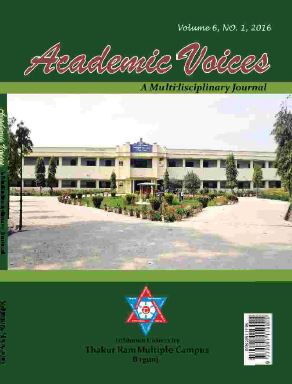Loan Management of Nabil Bank and Everest Bank: A Comparative Study
DOI:
https://doi.org/10.3126/av.v6i0.20109Keywords:
Deposit, Loan, Profitability, ROE and ROAAbstract
The study focuses on loan management of two commercial banks with reference of Nabil and Everest Bank of Nepal and its impact on profitability. This paper reports the comparative study of deposit, loan, ROA, ROE and CV. Descriptive research approach is applied for the readily available five years performance data from 2011/12 to 2015/ 16. Both of the banks have u lized most of the funds in the form of credit and advances which is the major part of ut ilizing deposits for income generat ing purpose. On the average, both Nabil and Everest bank have utilized its total deposits constant in consecutive years. Likewise, the mean ratio of total loan to total deposit of Nabil and Everest bank are 70.75% and 72.54% respectively. By coefficient variation analysis, Everest has more uniformity than Nabil since Everest has less CV of 6.16%. It can be concluded that the higher mean rat io indicates the good lending performance.
Academic Voices Vol.6 2016: 47-54
Downloads
Downloads
Published
How to Cite
Issue
Section
License
© Academic Voices: A multidisciplinary Journal
All rights reserved. No part of this journal may be reproduced in any form or by any electronic or mechanical means, including information storage and retrieval system, without permission in writing from the publisher/writers, except by a reviewer who may quote brief passages in a review.




